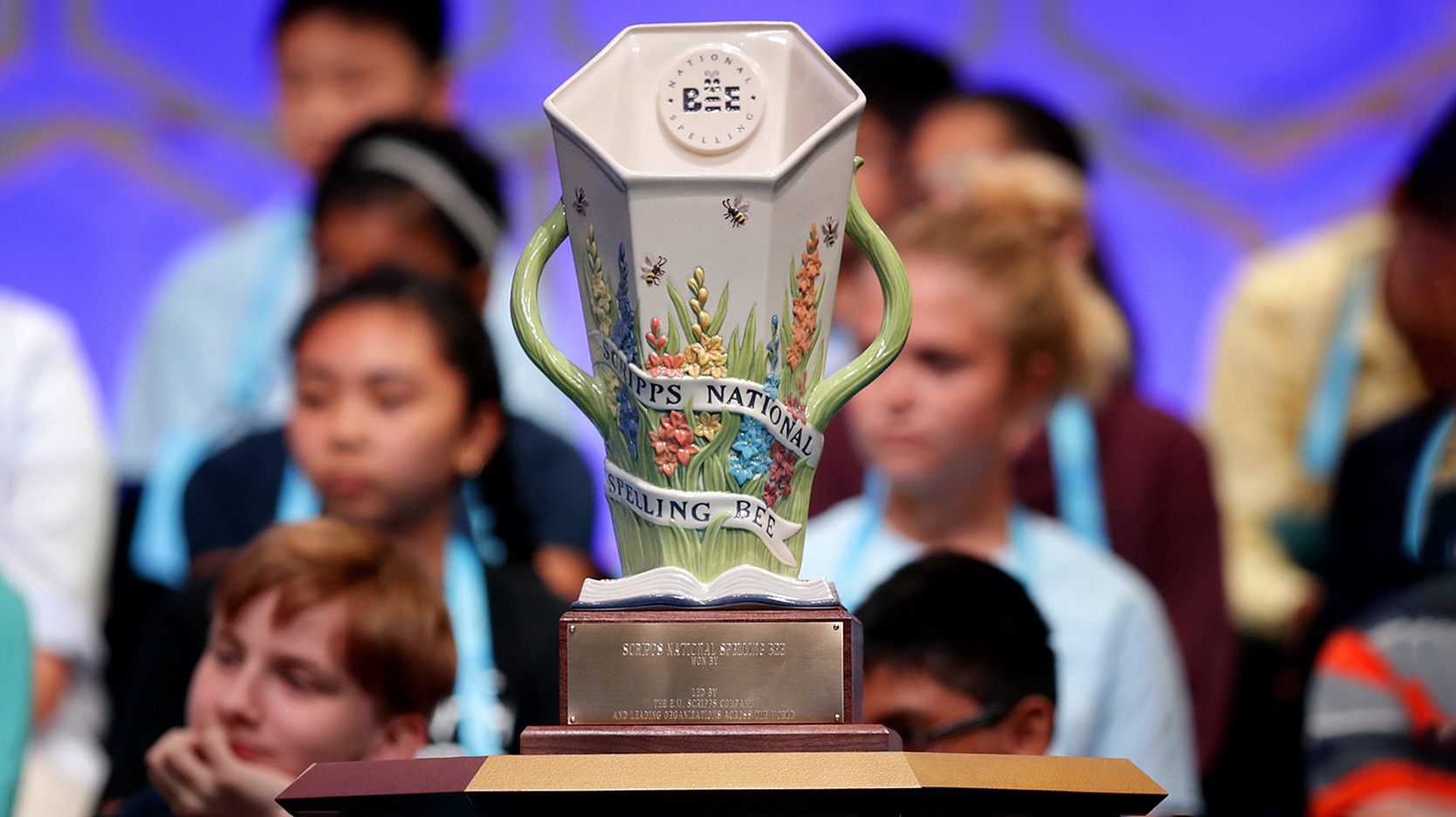Winning Scripps National Spelling Bee Words
The English language has literally hundreds of thousands of words. This number continues to grow each year. You could debate what distinguishes “real words” or “made-up words” for hours too, like whether they’re in a Scrabble dictionary. In any case, spelling bee competitors can’t rely only on their vast vocabulary. They also have to consider word origins, parts of speech and other contextual clues.
Take a deeper look into the winning Scripps National Spelling Bee words over the decades. You’ll see a remarkable range with unwavering complexity over the history of the spelling bee.
1925 to 1950: The Early Years of National Spelling Bee Words
The first-ever Scripps National Spelling Bee took place in 1925. Some people might think that early national spelling bee words were easier. Perhaps, but many of these winning words were undeniably challenging in their own right. Imagine playing these in Words With Friends!

Gladiolus (1925): A tropical plant with sword-shaped leaves and funnel-shaped flowers
Cerise (1926): A deep to vivid purplish red, cherry-colored
Abrogate (1927): To do away with or abolish, especially by authority
Knack (1928): A clever skill or special talent for doing something
Luxuriance (1929): The property of being characterized by rich or profuse growth
Albumen (1930): The white of an egg, consisting mainly of albumin and water
Foulard (1931): A lightweight twill or other plain-woven material with a printed pattern
Invulnerable (1932): Immune to attack, impossible to damage
Torsion (1933): The process or condition of twisting or being twisted
Brethren (1934): Members of a group (especially a male religious order), brothers
Intelligible (1935): Capable of being understood
Eczema (1936): A noncontagious skin disorder characterized by inflammation and itchy scales
Promiscuous (1937): A lack of discrimination or a person who casually has sex
Sanitarium (1938): A special health care facility for treating people with chronic disease
Canonical (1939): Conforming to orthodox or well-established rules or patterns
Therapy (1940): Treatment of illness, injury or disability
Initials (1941): An abbreviation of a person’s name using the first letters of their first, last and sometimes middle name
Sacrilegious (1942): Acting or speaking very disrespectfully toward something sacred
Semaphore (1946): A visual signaling apparatus with flags, lights or moving arms
Chlorophyll (1947): The green pigments found in plant cells for photosynthesis
Psychiatry (1948): The branch of medicine concerned with mental and emotional disorders
Onerous (1949): Something that is troublesome, burdensome or difficult to do
Meticulosity (1950): The quality of showing extreme care and concern for details
1951 to 1975: Increasing Complexity in Scripps Spelling Bee Words
National spelling bee words got harder and harder for the young spellers, year after year. And this only added to the eudaemonic delight of the winner (or co-winners) each year too.

Insouciant (1951): Nonchalant, carefree, casually unconcerned or indifferent
Vignette (1952): A brief skit or retelling of something that occurred
Soubrette (1953): A young women regarded as frivolous or flirtatious
Transept (1954): The part of a cross-shaped church at right angles to the long, main section
Crustaceology (1955): The branch of zoology that studies crustaceans like shrimp and crabs
Condominium (1956): An individual residential or commercial unit in a multi-unit building
Schappe (1957): To use a process of fermentation to remove sericin from silk
Syllepsis (1958): A grammatical construction where one word modifies multiple words, but agrees with only one in gender, number or case
Catamaran (1959): A boat with two parallel floats, propelled by sails or paddles
Eudaemonic (1960): Producing happiness and/or well-being
Smaragdine (1961): Having the color of or related to emeralds
Esquamulose (1962): Having smooth skin, not covered in scales
Equipage (1963): Equipment, furnishings or accessories
Sycophant (1964): A person who flatters people of wealth or influence for personal gain
Eczema (1965): A skin condition characterized by redness, itching and scaly lesions
Ratoon (1966): A shoot growing from the root of a plant that’s been cut
Chihuahua (1967): A small dog breed with pointed ears, originally from Mexico
Abalone (1968): A type of edible sea mollusk with a mother-of-pearl shell lining
Interlocutory (1969): A provisional decree given before a case’s final decision
Croissant (1970): A flaky, crescent-shaped roll or pastry of leavened dough
Shalloon (1971): A twilled woolen fabric used for coat linings
Macerate (1972): To soften or separate by soaking in a liquid
Vouchsafe (1973): To give or grant something either graciously or condescendingly
Hydrophyte (1974): A plant growing only in water or very wet earth
Incisor (1975): One of the front teeth of a mammal, between the canines
1976 to 2000: The National Spelling Bee Goes International
Even though it’s called the “national” spelling bee, the competition really is global in its scope. This really came to light toward the end of the 20th century. In 1985, 13-year-old Balu Natarajan started a trend of Indian American spelling bee champions. And in 1998, 12-year-old Jody-Anne Maxwell of Jamaica was the first non-American winner.

Narcolepsy (1976): A neurological disorder characterized by episodes of sudden, involuntary sleep
Cambist (1977): An expert in trading foreign currencies
Deification (1978): The act of embodying the qualities of a god
Maculature (1979): Junk mail and other paper waste
Elucubrate (1980): To solve, write or compose by working long and diligently
Sarcophagus (1981): A stone coffin, often on display in a monumental tomb
Psoriasis (1982): A chronic skin disease with scaly, reddish patches
Purim (1983): A Jewish holiday commemorating the deliverance of the Jews by Haman
Luge (1984): A racing sled where the rider(s) lie face up with feet forward
Milieu (1985): A person’s social setting or cultural environment
Odontalgia (1986): A toothache
Staphylococci (1987): The spherical bacteria responsible for MRSA infections
Elegiacal (1988): Expressing mourning and sorrow, fit for an elegy
Spoliator (1989): A person who plunders, pillages or robs
Fibranne (1990): A spun rayon fabric often woven to resemble linen
Antipyretic (1991): Reducing or tending to reduce fever
Lyceum (1992): A hall for public lectures, discussions and entertainment
Kamikaze (1993): Relating to a suicide attack by Japanese pilots during World War II
Antediluvian (1994): Extremely old or old-fashioned, before the biblical Great Flood
Xanthosis (1995): A yellowing discoloration of tissues through degeneration
Vivisepulture (1996): The practice of burying a person alive
Euonym (1997): A name well suited to a person, place or thing
Chiaroscurist (1998): A painter who uses light and shade to create a sense of volume
Logorrhea (1999): Excessive talkativeness or use of words
Demarche (2000): A maneuver or course of action, often as a protest or warning
2001 to Present: Words from the Modern Scripps National Spelling Bee
Just as modern poets are changing how people are seeing the world, the modern era of the annual Scripps National Spelling Bee continues to evolve too. Co-champions are becoming more commonplace with even more esoteric spelling bee words. What does scherenschnitte mean? These words are tough! No wonder Scripps offers official study guides for their National Spelling Bee words.

Succedaneum (2001): A substitute, particularly in medicine
Prospicience (2002): Foresight, seeing ahead or knowing in advance
Pococurante (2003): Indifferent or apathetic
Autochthonous (2004): Native to the place where found, indigenous
Appoggiatura (2005): An embellishing, rhythmically strong dissonant grace note in music
Ursprache (2006): A reconstructed, hypothetical parent language
Serrefine (2007): Small forceps used for clamping an artery in surgery
Guerdon (2008): A reward, recompense or prize
Laodicean (2009): Of or related to the ancient city of Laodicea in modern day Turkey
Stromuhr (2010): An instrument for measuring the velocity of blood flow
Cymotrichous (2011): Having wavy hair
Guetapens (2012): Ambush or trap
Knaidel (2013): A type of Jewish dumpling eaten during Passover
Stichomythia (2014): A form of verbal sparring with alternate lines in ancient Greek drama
Feuilleton: A short literary essay or sketchScherenschnitte (2015): The art of cutting continuous paper designs, originating in 1500s Switzerland and Germany
Nunatak: An isolated mountain peak or ridge protruding from a glacier’s surfaceFeldenkrais (2016): A somatic educational system for reducing pain or movement limitations
Gesellschaft: A hypothetical mode of society with self-serving individuals and impersonal tiesMarocain (2017): A heavy crepe fabric with a cross-ribbed texture
Koinonia (2018): Communion by intimate participation, as with the Christian church
Auslaut (2019): The last sound of a word or syllable
Erysipelas: An acute infectious disease of the skin with local inflammation and fever
Bougainvillea: Woody shrubs or vines with small flowers and large red or purple bracts
Aiguillette: An ornamental corn hung in loops on the shoulder of certain military uniforms
Pendeloque: A drop-shaped diamond or gem used as a pendant
Palama: The webbing on the feet of aquatic birds
Cernuous: Nodding, drooping, or hanging downward, as in a flower or bud
Odylic: Of or pertaining to odes, a lyric poem honoring a person or subject2020: The 2020 Scripps National Spelling Bee was canceled due to the pandemic.
Murraya (2021): A genus of tropical Asiatic and Australian trees.
Moorhen (2022): The female of the red grouse.
(NOTE: For the 2022 National Spelling Bee, “moorhen” was, more specifically, the final winning word. There was no single winning word, since the winner was determined via a multi-word “spell-off” between the last two contestants.)
Lists of Spelling Bee Words and Resources
Has your child thrown their hat into the mix for the school spelling bee? Test their skills by reviewing an extensive list of spelling bee study words. Taking the time to unscramble letters and find words is good practice too. Spelling difficult words isn’t just for kids either! Put your own lexiconic prowess to the test with words for an adult spelling bee.
If your child truly desires to compete in spelling bees, including the Scripps National Spelling Bee on the big stage, you’ll want more resources and information than word lists. To find what you’re looking for, read our complete guide of spelling bee tools, tips and strategies. The knowledge you and your child will gain from reading it will put them on the path to success.
Celebrate Noteworthy Scripps Spelling Bee Champions
Now, you’ve had a chance to look over all of the Scripps National Spelling Bee words from over the years. Next, get to know some of the champions who correctly spelled those challenging words. Check out WordFinder's list of Scripps National Spelling Bee winners. One champion went on to work as an aerospace engineer with the Jet Propulsion Laboratory (JPL) at NASA!
Michael Kwan is a professional writer and editor with over 15 years of experience. Fueled by caffeine and WiFi, he's no stranger to word games and dad jokes.




